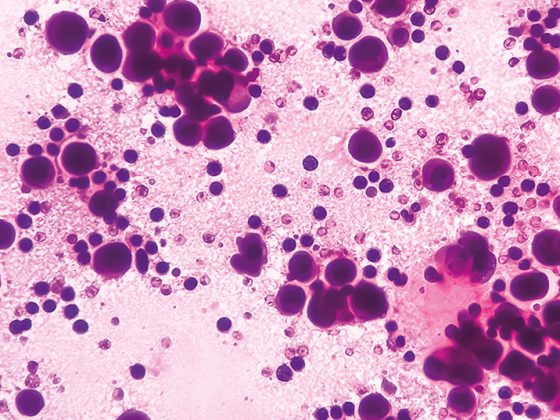At the 10th MEET & GREET of IACULIS, the Zurich-based agency for personalized medicine communication, Dr. Antonella Santuccione Chadha, Executive Director of the Women’s Brain Project, explained the importance of gender as a variable in drug development and highlighted important differences between women and men in mental illness and its treatment.
The Women’s Brain Project is engaged in research on the role of gender in the development and progression of brain diseases [1]. Both “sex”, i.e. gender according to genetic considerations, and “gender”, i.e. gender as a social construct, are taken into account [2, 3]. Both influence the symptoms of the disease. In addition, treatment response and the safety profile of medications may differ between men and women [4-6]. With special pioneering work, the “Women’s Brain Project” led by Dr. Santuccione Chadha aims to ensure that gender-specific differences are taken into account in preclinical to clinical drug development.
Bias in prevalence of mental illness.
Life expectancy is increasing for men as well as for women, but what quality of life accompanies old age in each case [7]? Women live longer than men on average, but show greater morbidity from chronic and mental illness [8]. The prevalence of dementia is higher in women, and 65-year-old women have a significantly greater risk of developing AD (21.1%) than men of the same age, with a risk of 11.6% [9, 10]. This is not only because women live longer: The effect is visible long before the disease manifests itself [11, 12]. Older women in Switzerland are also more likely than men to take painkillers, sleeping pills or anti-anxiety drugs [13].
Differences in symptoms, progression, and biomarkers.
However, there are not only differences in prevalence and specific risk for noncommunicable chronic diseases between men and women. Important differences also lie in biomarkers, symptoms, and response to treatment [6, 11, 12]. Women who develop Parkinson’s are more likely to have tremors, an increased risk of falls, and show gastrointestinal symptoms, while men more often suffer from cognitive impairment and muscular blockages. Parkinson’s also progresses more rapidly in women [6]. For Alzheimer’s disease, it has been shown that women accumulate a greater amount of the toxic tau protein aggregates that contribute to atrophy [11]. A deep understanding of these different courses in men and women is essential to develop agents that target specific symptoms.
Are gender-specific requirements considered in research?
Unfortunately, we are only at the beginning and the variable “gender” is still given too little attention in drug development. The Women’s Brain Project is working on guidelines on how to address key differences between men and women in clinical research. Only this enables a further step towards precision medicine as defined by Eric Topol [14]. That U.S. authorities are also developing an awareness of gender differences is demonstrated by their decision in 2019 to approve an HIV drug for men only. Not a single woman had been included in the pivotal clinical trials [15].
Conclusion – “The future belongs to those who can tell the story in the right way”.
Through research, exchange, education, and outreach, the Women’s Brain Project aims to increasingly resolve the gender bias in prevention and treatment, thereby enabling sustainable precision medicine and avoiding the costs of failed therapies [1]. Communicating the results is also key, because even the best idea in the world won’t bear fruit if you don’t communicate it well. So, Dr. Santuccione Chadha’s excellent presentation served the goal of the Women’s Brain Project.
Literature
- Women’s Brain Project, https://www.womensbrainproject.com/, Last accessed June 2022.
- Britannica Dictionary, “Sex” and “Gender,” www.britannica.com/dictionary, Last accessed June 2022.
- McCarthy MM. Multifaceted origins of sex differences in the brain. Philos Trans R Soc Lond B Biol Sci, 2016. 371(1688): p. 20150106.
- Ferretti MT et al. Sex differences in Alzheimer disease – the gateway to precision medicine. Nat Rev Neurol, 2018. 14(8): p. 457-469.
- United States General Accounting Office (2001), Drug Safety: Most Drugs Withdrawn in Recent Years Had Greater Health Risks for Women, GAO-01-286R.
- Cerri S et al. Parkinson’s Disease in Women and Men: What’s the Difference? J Parkinson’s Dis, 2019. 9(3): p. 501-515.
- Swiss Federal Statistical Office: Population, births and deaths, life expectancy, www.bfs.admin.ch, Last accessed: June 2022.
- Habermann & Horstmeier (2018), Public Health Kompakt, chapter 8, p.366.
- 2020 Alzheimer’s disease facts and figures. Alzheimers Dement, 2020.
- Alzheimer Europe, Dementia in Europe Yearbook (2019), Estimating the prevalence of dementia in Europe, p.108.
- Smith R et al. The accumulation rate of tau aggregates is higher in females and younger amyloid-positive subjects. Brain, 2020. 143(12): p. 3805-3815.
- Babapour Mofrad R et al. Sex differences in CSF biomarkers vary by Alzheimer disease stage and APOE ε4 genotype. Neurology, 2020. 95(17): p. e2378-e2388.
- MonAM – Swiss Monitoring System for Addiction and Noncommunicable Diseases, Chronic Medication Use (Age: 15+), https://ind.obsan.admin.ch/indicator/monam/chronische-medikamenteneinnahme-alter-15, Last accessed June 2022.
- Topol EJ. Individualized medicine from prewomb to tomb. Cell, 2014. 157(1): p. 241-53.
- New York Times (2019), F.D.A. Approves NEW H.I.V. Prevention Drug, but Not for Women, https://www.nytimes.com/2019/10/04/health/fda-descovy-truvada-hiv.html, Last accessed June 2022.
Text: IACULIS GmbH, Dr. sc. nat. Katja Becker












